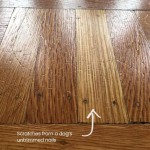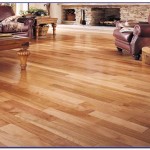Formaldehyde in Bamboo Flooring: Essential Considerations
Bamboo flooring has gained popularity as an eco-friendly alternative to traditional hardwood flooring. However, concerns have been raised regarding the potential presence of formaldehyde in bamboo flooring.
Formaldehyde is a colorless gas with a pungent odor commonly used as an adhesive in various building materials, including bamboo flooring. In high concentrations, exposure to formaldehyde can cause respiratory irritation, eye irritation, and other health concerns.
The amount of formaldehyde in bamboo flooring can vary depending on the manufacturing process and the type of adhesive used. Some bamboo flooring products are manufactured using low-emission adhesives that comply with strict formaldehyde emission standards, while others may contain higher levels of formaldehyde.
Regulatory Standards
Various regulatory bodies have established standards to limit formaldehyde emissions in building materials. In the United States, the California Air Resources Board (CARB) has implemented stringent regulations that set low formaldehyde emission limits for composite wood products, including bamboo flooring.
Other countries, such as the European Union and China, also have regulations in place to limit formaldehyde emissions. These regulations help ensure that bamboo flooring products meet specific formaldehyde emission thresholds.
Health Concerns
Exposure to formaldehyde at high concentrations can cause a range of health problems, including:
- Respiratory irritation
- Eye irritation
- Headaches
- Nausea
- Skin irritation
Prolonged exposure to high formaldehyde levels has also been linked to an increased risk of respiratory diseases and cancer.
Choosing Low-Emission Bamboo Flooring
To minimize the potential health risks associated with formaldehyde, it is crucial to choose low-emission bamboo flooring. Look for products that comply with strict formaldehyde emission standards, such as CARB or other relevant regulations.
When selecting bamboo flooring, consider the following tips:
- Request a certificate of compliance from the manufacturer to verify the formaldehyde emission levels.
- Choose bamboo flooring with a low formaldehyde emission rating (PPM) as per CARB or other applicable standards.
- Opt for solid bamboo flooring over engineered bamboo, as it typically contains less adhesive and therefore lower formaldehyde emissions.
By following these guidelines, you can select bamboo flooring that meets stringent formaldehyde emission standards and minimizes potential health risks.

Get The Facts On Formaldehyde In Bamboo Flooring

Engineered Bamboo The Truth About Formaldehyde Water And Resins House Of

Formaldehyde Free Bamboo Flooring From Ecotimber Buildinggreen

Get The Facts On Formaldehyde In Bamboo Flooring

Non Toxic Bamboo Flooring Formaldehyde Free Types Brands My Chemical House

Eco Forest Formaldehyde Free Easy Lock Bamboo Flooring Interior China Made In Com

Bamboo Flooring Pros And Cons Forbes Home

Bamboo Flooring Best Quality Non Toxic Green Building Supply

Bamboo Flooring Understanding The Options Buildinggreen

Spc Floor Formaldehyde Free Household Bamboo Charcoal Fiber China Flooring Vinyl Made In Com
Related Posts








